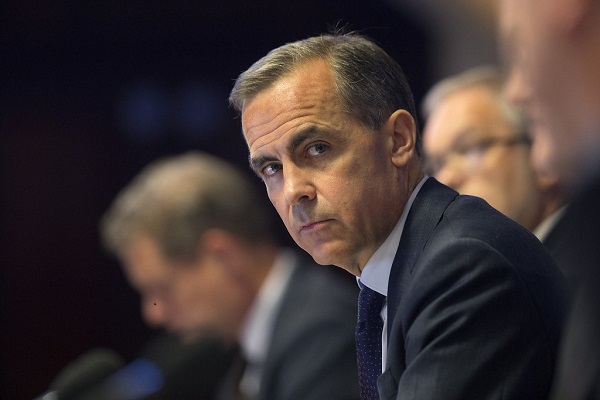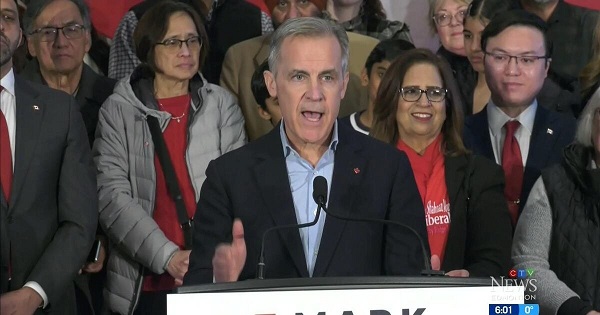Alberta
Alberta announces new senatorial election in October 2021

From the Province of Alberta: Battling back with a new Senate Election
Bill 13, the Alberta Senate Election Act, would reinstate Senate nominee elections to enable Albertans to choose who would best represent them in the Senate.
Premier Jason Kenney and Justice and Solicitor General Minister Doug Schweitzer announce Bill 13: The Alberta Senate Election Act.
Senate nominee elections would reflect the democratic will of Albertans and make senators directly accountable to Alberta voters to defend our province’s interests.
“We are introducing the Alberta Senate Election Act to enable Albertans to choose the people they think would best represent them in the Upper Chamber. Senators who are elected by Albertans have shown that they effectively stand up for Alberta’s economy, jobs and families. They set a strong example to other provinces of the benefits of having effective voices with the moral legitimacy of having been elected.” Jason Kenney, Premier
In the four elections between 1989 and 2012 held under the previous Senate elections law, which expired in 2016, Alberta voters nominated 10 candidates for Senate appointments. Of those, five were ultimately appointed, including current senators Doug Black and Scott Tannas, who recently stood up for Alberta’s economy and for resource jobs in Canada by advocating for changes to Bill C-69, the ‘No More Pipelines Bill’ and the prejudicial Bill C-48.
“Elected senators are accountable to Albertans and have greater moral legitimacy to effectively speak on our behalf because they receive a mandate from voters. When Albertans have had a say in who would best represent them in the Senate, they have chosen people of the highest calibre who have been effective voices for Alberta’s interests.” Doug Schweitzer, Minister of Justice and Solicitor General
“Alberta Senate nominee elections had played an important role in allowing Albertans to decide who will be their voice at the federal Parliament. These elections bestowed significant moral and political legitimacy to Alberta’s senatorial candidates. I was honoured to have won in the 2012 Alberta Senate nominee elections, and am proud to continue to serve alongside my fellow Albertan colleague, the Honourable Scott Tannas. The renewal of the Senatorial Selection Act is an important step forward for reasserting Alberta’s role as a leader in the democratization of the Canadian Senate.”Sen. Doug Black
“Since 1989, Alberta voters have gone to the polls to nominate their choice for who should represent them in Canada’s Senate. I am proud to be one of five elected candidates to have been appointed as a senator from Alberta. I am pleased to see the Government of Alberta is reviving the Senatorial Selection Act after the previous government refused to renew it. Albertans have a proud tradition of electing candidates for the Senate, and should continue to do so.”Sen. Scott Tannas
“As a proud Albertan and retired member of the Senate of Canada, I am pleased to see the introduction of Bill 13: The Alberta Senate Election Act. This act would revive Alberta’s proud history of leading and strengthening our shared Canadian democratic traditions. I have always firmly believed that a strong, democratic Senate is in the interest of provinces like Alberta that do not have adequate weight in the House of Commons but important regional interests. Under the leadership of Premier Jason Kenney, I am confident that this government will restore Alberta’s rightful voice and standing in federal politics.”Betty Unger, former senator
“In 2012, over 300,000 Alberta voters marked my name on their Senate election ballot. Despite that, Prime Minister Justin Trudeau refused to respect the wishes of Albertans, and instead appointed senators who voted against Alberta’s interests and in favour of the so-called ‘No More Pipelines Act,’ Bill C-69. It’s time for Albertans to once again have their say on who they want to see representing them in Ottawa.”Mike Shaikh, senate nominee
Quick facts
- Alberta has six representatives in the Senate.
- In 2012, 1.3 million Albertans voted in a Senate nominee election, which was held in conjunction with the provincial election.
- In general, the law would allow for voting for Senate nominees:
- as part of provincial or municipal elections
- as a stand-alone process
- with a referendum
- The next scheduled Alberta Senate vacancy will be in March 2021.
- The Government of Alberta would provide names of elected nominees to the prime minister for consideration when filling Senate vacancies.
- The previous Senate elections legislation expired in 2016.
Alberta
Low oil prices could have big consequences for Alberta’s finances

From the Fraser Institute
By Tegan Hill
Amid the tariff war, the price of West Texas Intermediate oil—a common benchmark—recently dropped below US$60 per barrel. Given every $1 drop in oil prices is an estimated $750 million hit to provincial revenues, if oil prices remain low for long, there could be big implications for Alberta’s budget.
The Smith government already projects a $5.2 billion budget deficit in 2025/26 with continued deficits over the following two years. This year’s deficit is based on oil prices averaging US$68.00 per barrel. While the budget does include a $4 billion “contingency” for unforeseen events, given the economic and fiscal impact of Trump’s tariffs, it could quickly be eaten up.
Budget deficits come with costs for Albertans, who will already pay a projected $600 each in provincial government debt interest in 2025/26. That’s money that could have gone towards health care and education, or even tax relief.
Unfortunately, this is all part of the resource revenue rollercoaster that’s are all too familiar to Albertans.
Resource revenue (including oil and gas royalties) is inherently volatile. In the last 10 years alone, it has been as high as $25.2 billion in 2022/23 and as low as $2.8 billion in 2015/16. The provincial government typically enjoys budget surpluses—and increases government spending—when oil prices and resource revenue is relatively high, but is thrown into deficits when resource revenues inevitably fall.
Fortunately, the Smith government can mitigate this volatility.
The key is limiting the level of resource revenue included in the budget to a set stable amount. Any resource revenue above that stable amount is automatically saved in a rainy-day fund to be withdrawn to maintain that stable amount in the budget during years of relatively low resource revenue. The logic is simple: save during the good times so you can weather the storm during bad times.
Indeed, if the Smith government had created a rainy-day account in 2023, for example, it could have already built up a sizeable fund to help stabilize the budget when resource revenue declines. While the Smith government has deposited some money in the Heritage Fund in recent years, it has not created a dedicated rainy-day account or introduced a similar mechanism to help stabilize provincial finances.
Limiting the amount of resource revenue in the budget, particularly during times of relatively high resource revenue, also tempers demand for higher spending, which is only fiscally sustainable with permanently high resource revenues. In other words, if the government creates a rainy-day account, spending would become more closely align with stable ongoing levels of revenue.
And it’s not too late. To end the boom-bust cycle and finally help stabilize provincial finances, the Smith government should create a rainy-day account.
Alberta
Governments in Alberta should spur homebuilding amid population explosion
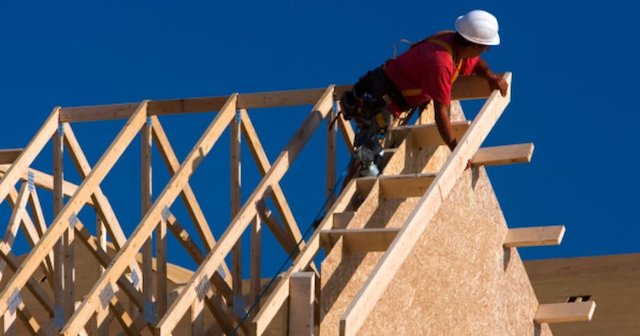
From the Fraser Institute
By Tegan Hill and Austin Thompson
In 2024, construction started on 47,827 housing units—the most since 48,336 units in 2007 when population growth was less than half of what it was in 2024.
Alberta has long been viewed as an oasis in Canada’s overheated housing market—a refuge for Canadians priced out of high-cost centres such as Vancouver and Toronto. But the oasis is starting to dry up. House prices and rents in the province have spiked by about one-third since the start of the pandemic. According to a recent Maru poll, more than 70 per cent of Calgarians and Edmontonians doubt they will ever be able to afford a home in their city. Which raises the question: how much longer can this go on?
Alberta’s housing affordability problem reflects a simple reality—not enough homes have been built to accommodate the province’s growing population. The result? More Albertans competing for the same homes and rental units, pushing prices higher.
Population growth has always been volatile in Alberta, but the recent surge, fuelled by record levels of immigration, is unprecedented. Alberta has set new population growth records every year since 2022, culminating in the largest-ever increase of 186,704 new residents in 2024—nearly 70 per cent more than the largest pre-pandemic increase in 2013.
Homebuilding has increased, but not enough to keep pace with the rise in population. In 2024, construction started on 47,827 housing units—the most since 48,336 units in 2007 when population growth was less than half of what it was in 2024.
Moreover, from 1972 to 2019, Alberta added 2.1 new residents (on average) for every housing unit started compared to 3.9 new residents for every housing unit started in 2024. Put differently, today nearly twice as many new residents are potentially competing for each new home compared to historical norms.
While Alberta attracts more Canadians from other provinces than any other province, federal immigration and residency policies drive Alberta’s population growth. So while the provincial government has little control over its population growth, provincial and municipal governments can affect the pace of homebuilding.
For example, recent provincial amendments to the city charters in Calgary and Edmonton have helped standardize building codes, which should minimize cost and complexity for builders who operate across different jurisdictions. Municipal zoning reforms in Calgary, Edmonton and Red Deer have made it easier to build higher-density housing, and Lethbridge and Medicine Hat may soon follow suit. These changes should make it easier and faster to build homes, helping Alberta maintain some of the least restrictive building rules and quickest approval timelines in Canada.
There is, however, room for improvement. Policymakers at both the provincial and municipal level should streamline rules for building, reduce regulatory uncertainty and development costs, and shorten timelines for permit approvals. Calgary, for instance, imposes fees on developers to fund a wide array of public infrastructure—including roads, sewers, libraries, even buses—while Edmonton currently only imposes fees to fund the construction of new firehalls.
It’s difficult to say how long Alberta’s housing affordability woes will endure, but the situation is unlikely to improve unless homebuilding increases, spurred by government policies that facilitate more development.
-

 Media2 days ago
Media2 days agoCBC retracts false claims about residential schools after accusing Rebel News of ‘misinformation’
-

 Bjorn Lomborg2 days ago
Bjorn Lomborg2 days agoNet zero’s cost-benefit ratio is CRAZY high
-

 2025 Federal Election2 days ago
2025 Federal Election2 days agoMark Carney Wants You to Forget He Clearly Opposes the Development and Export of Canada’s Natural Resources
-
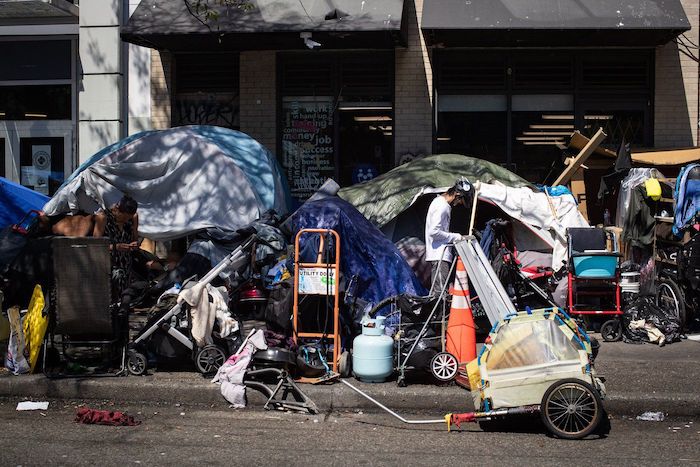
 2025 Federal Election2 days ago
2025 Federal Election2 days agoPolice Associations Endorse Conservatives. Poilievre Will Shut Down Tent Cities
-
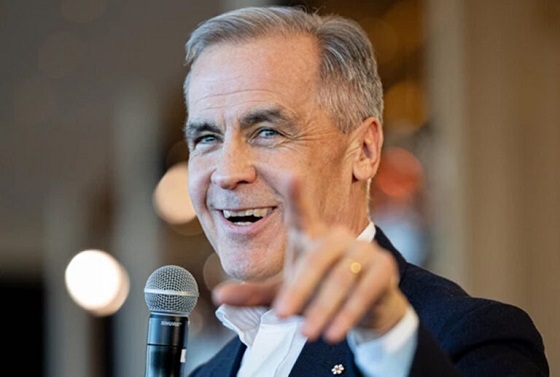
 2025 Federal Election2 days ago
2025 Federal Election2 days agoCarney’s Hidden Climate Finance Agenda
-

 2025 Federal Election2 days ago
2025 Federal Election2 days agoPolls say Canadians will give Trump what he wants, a Carney victory.
-

 2025 Federal Election2 days ago
2025 Federal Election2 days agoColumnist warns Carney Liberals will consider a home equity tax on primary residences
-

 2025 Federal Election2 days ago
2025 Federal Election2 days agoNine Dead After SUV Plows Into Vancouver Festival Crowd, Raising Election-Eve Concerns Over Public Safety




